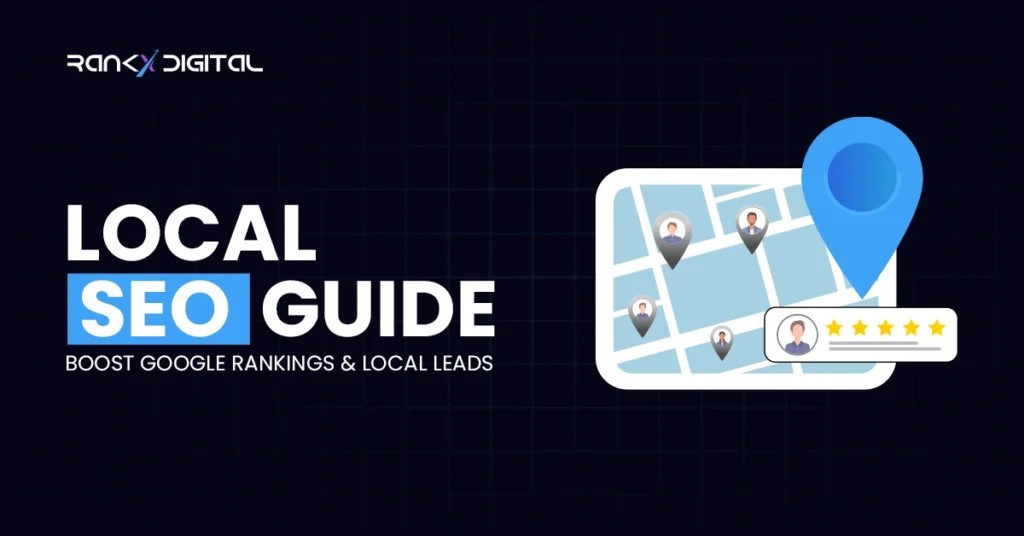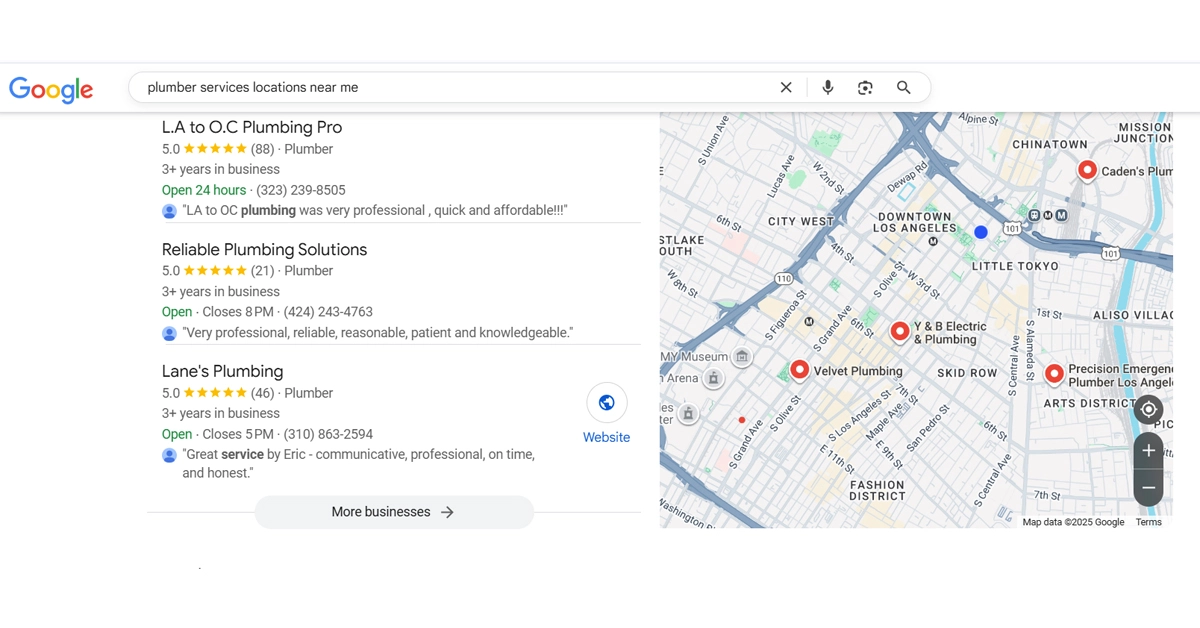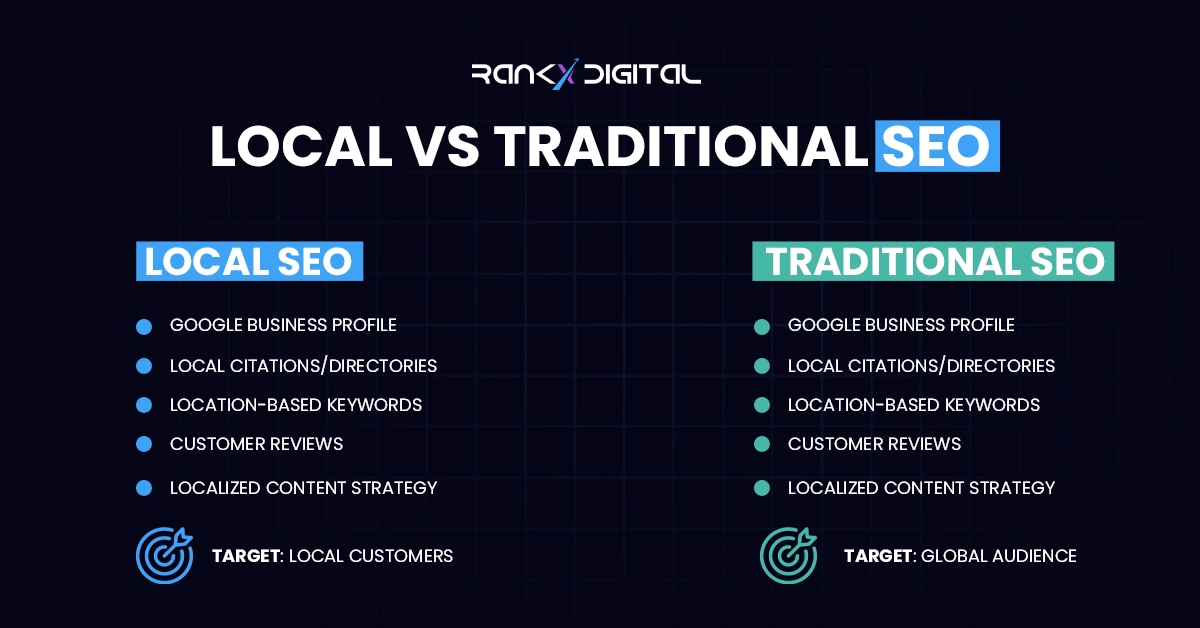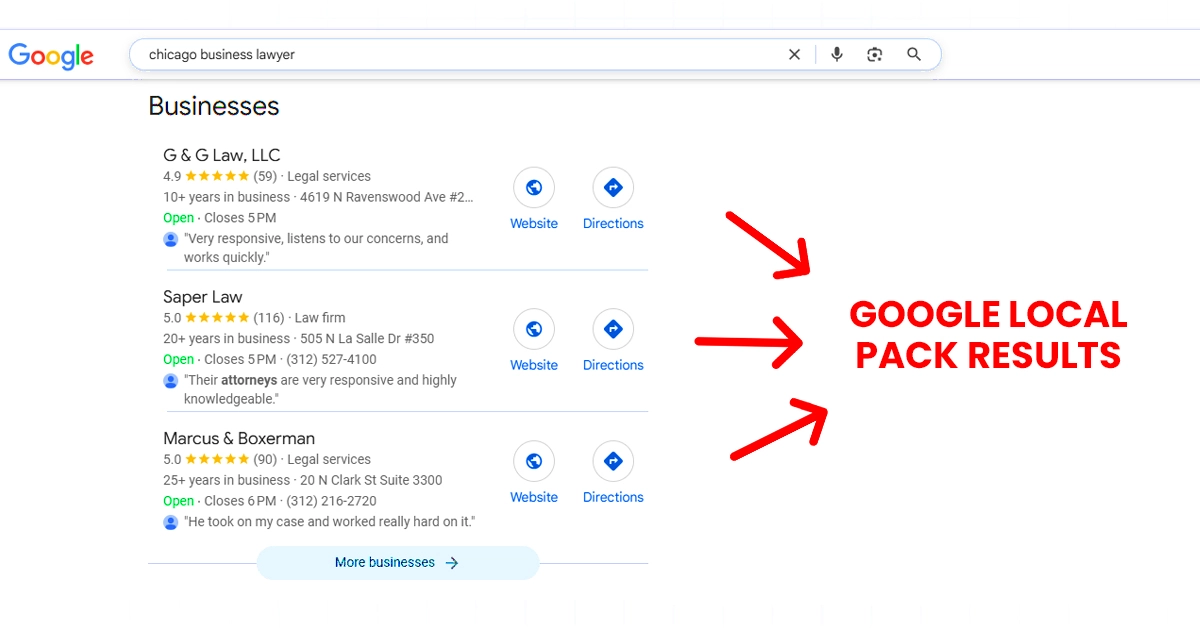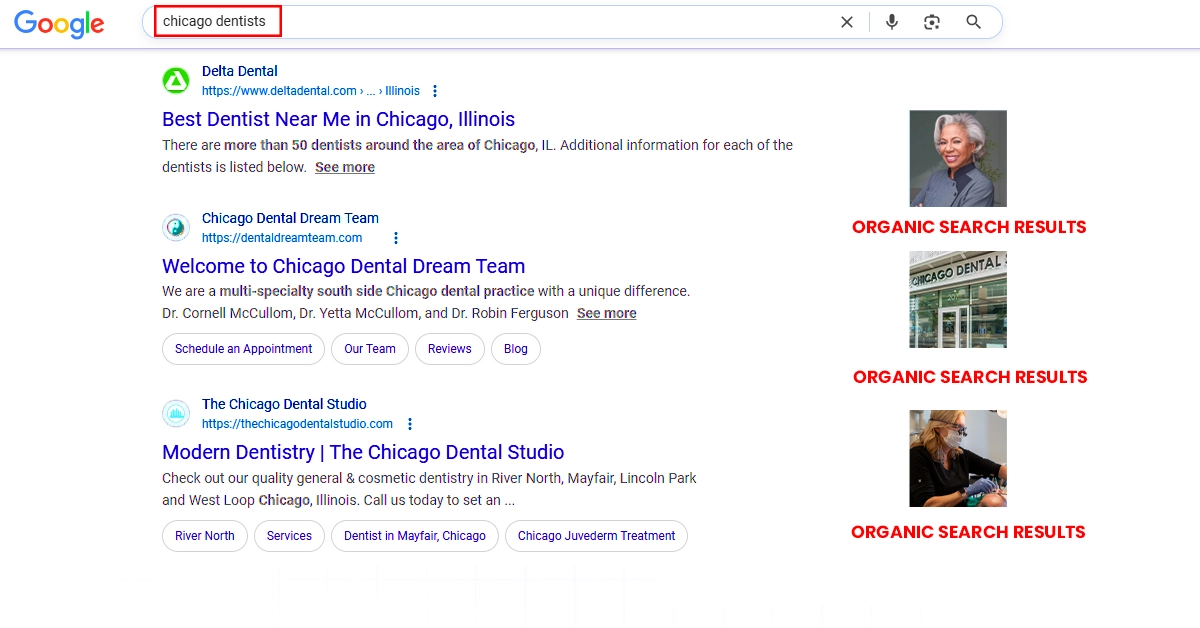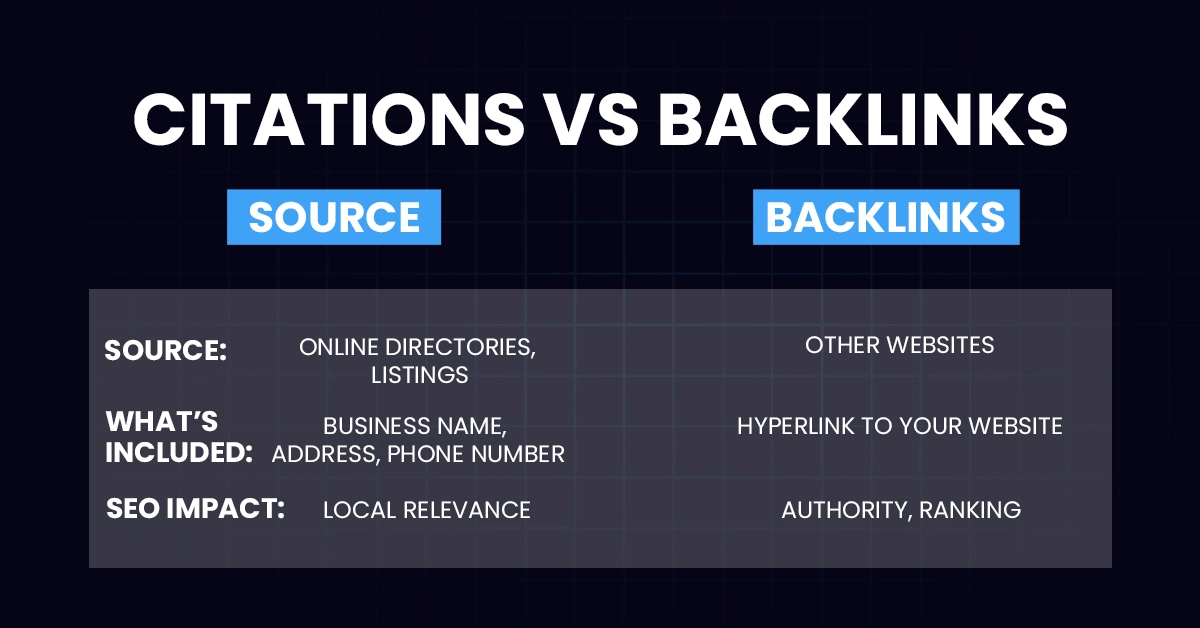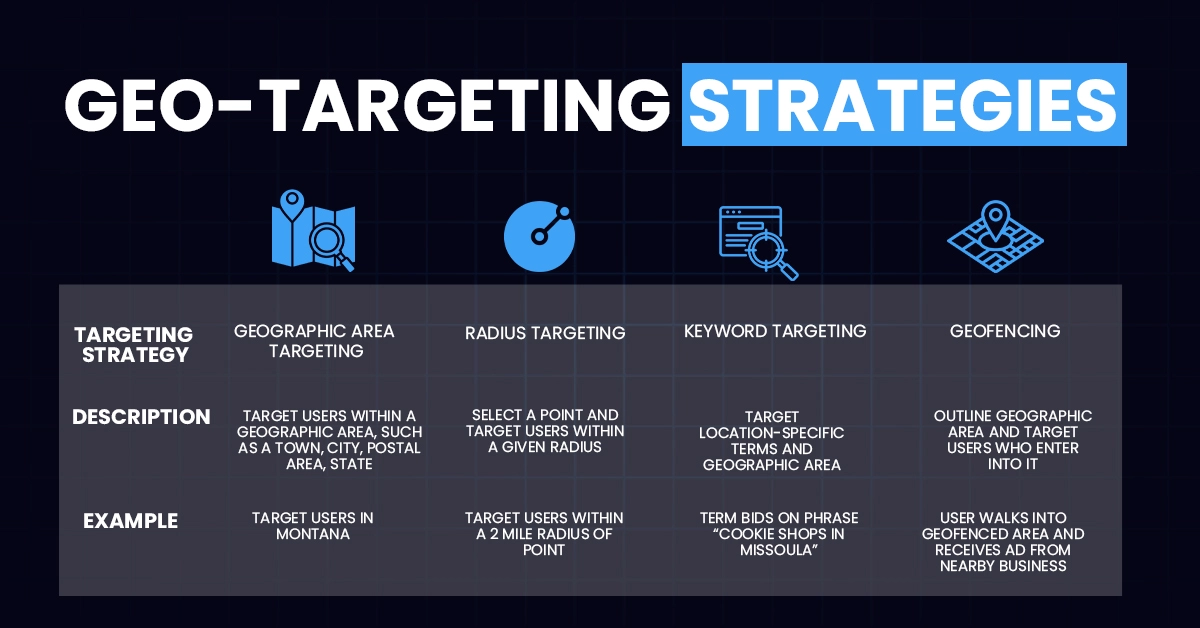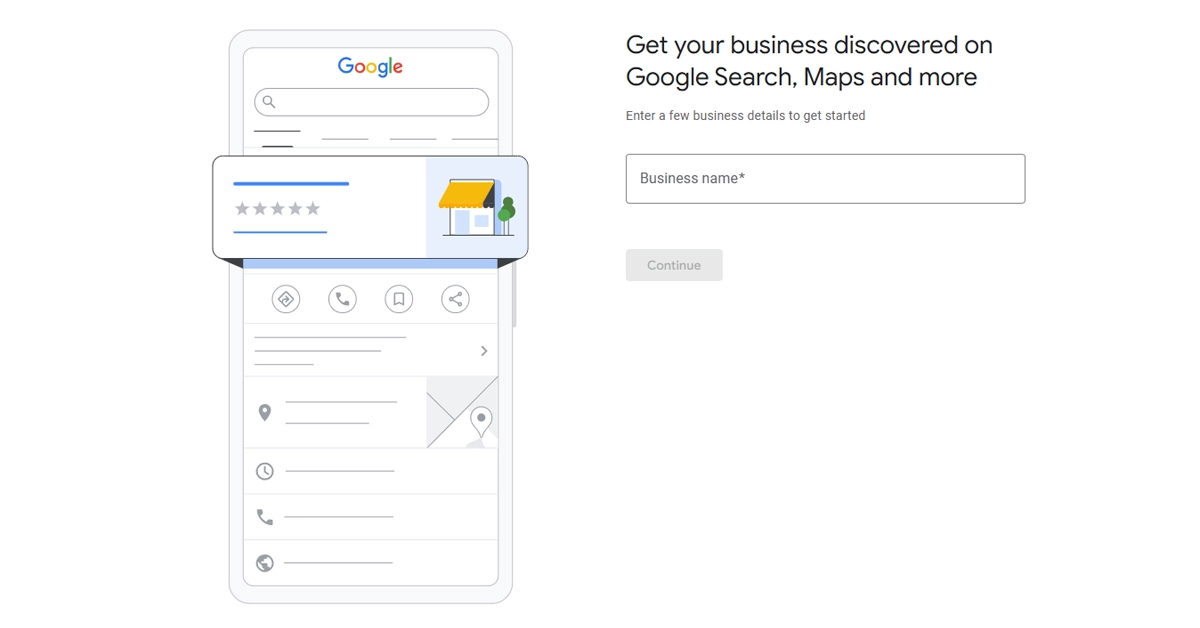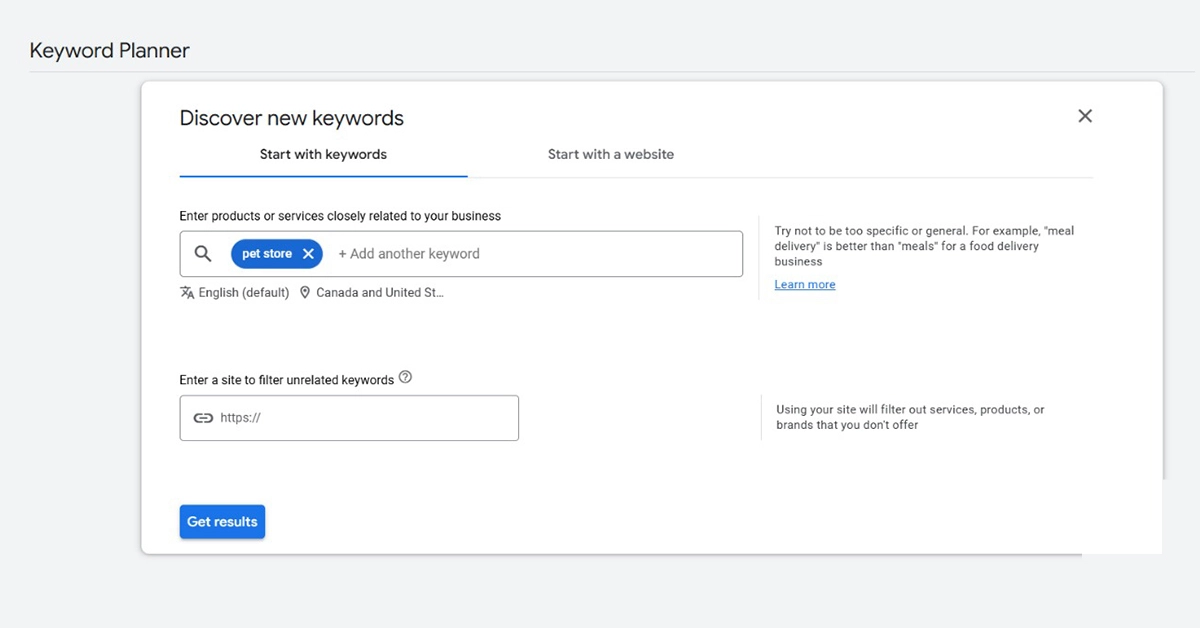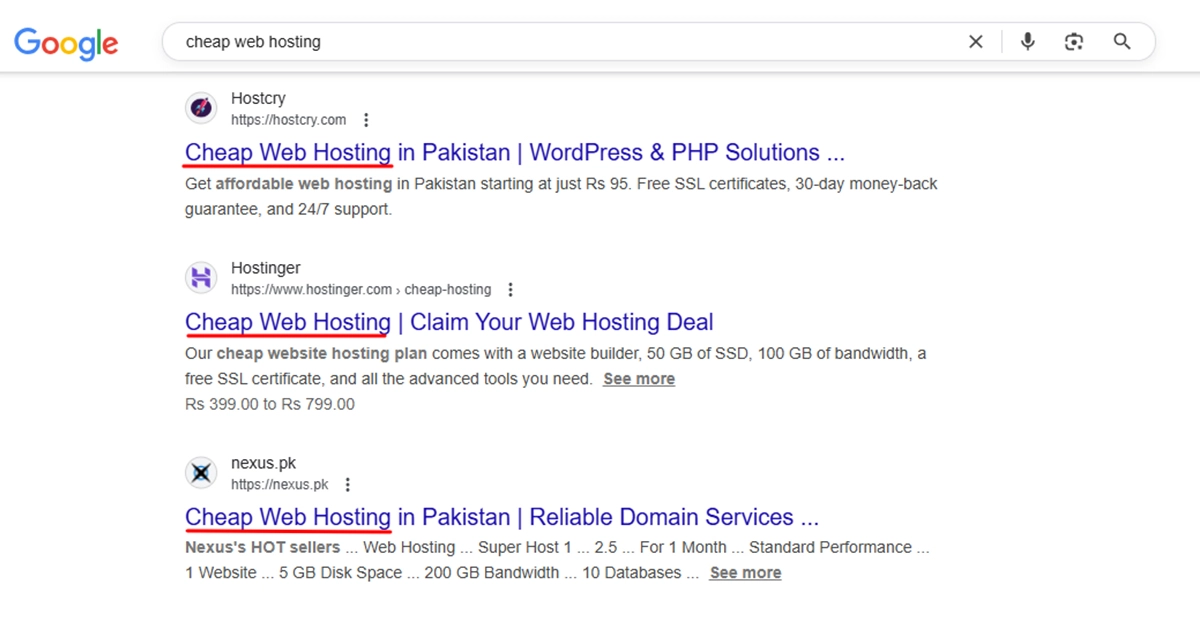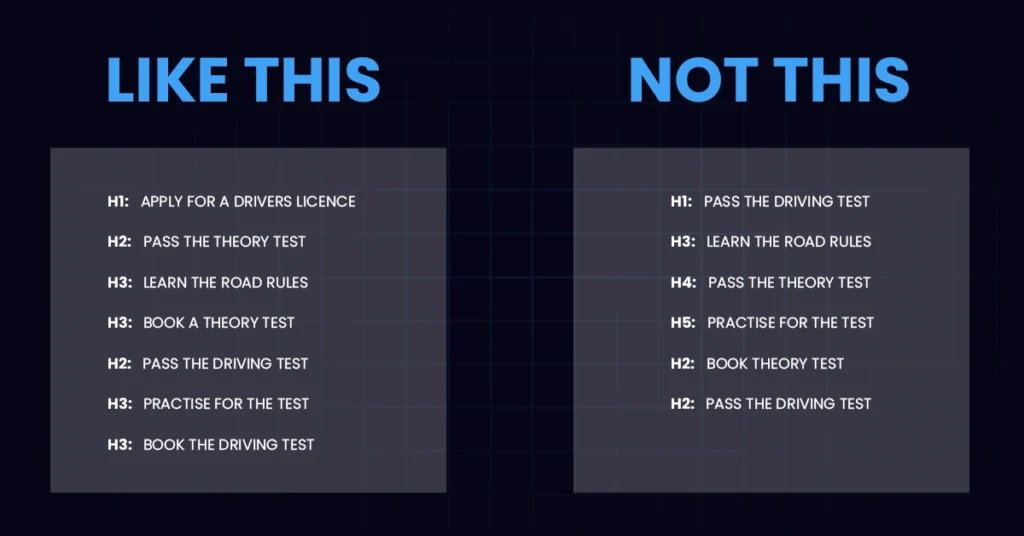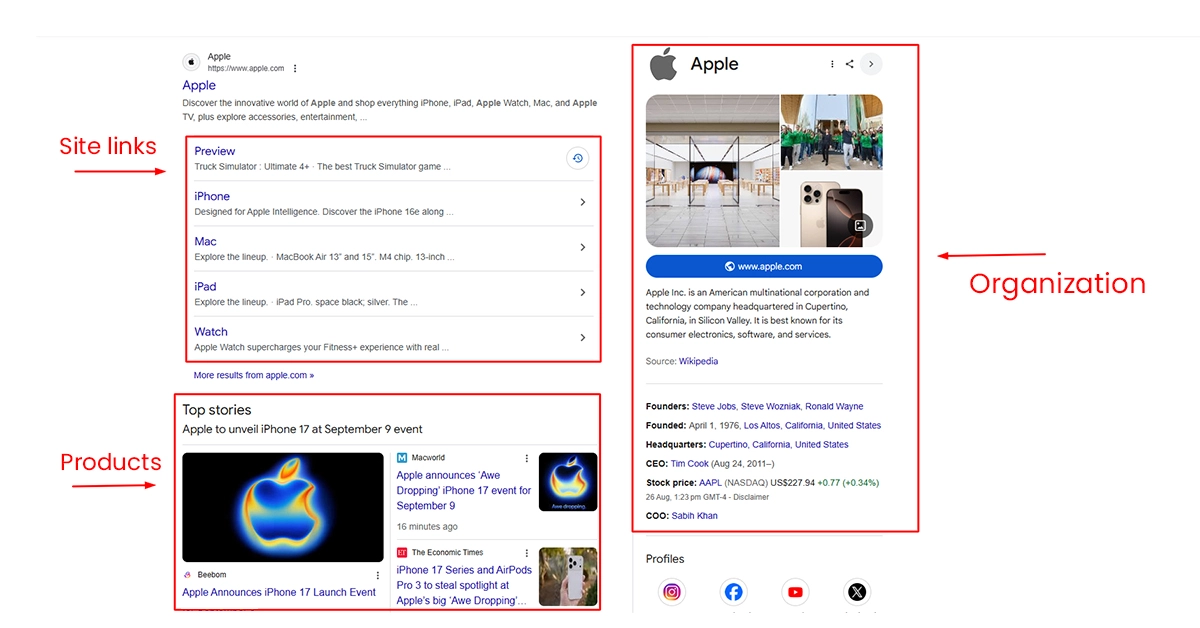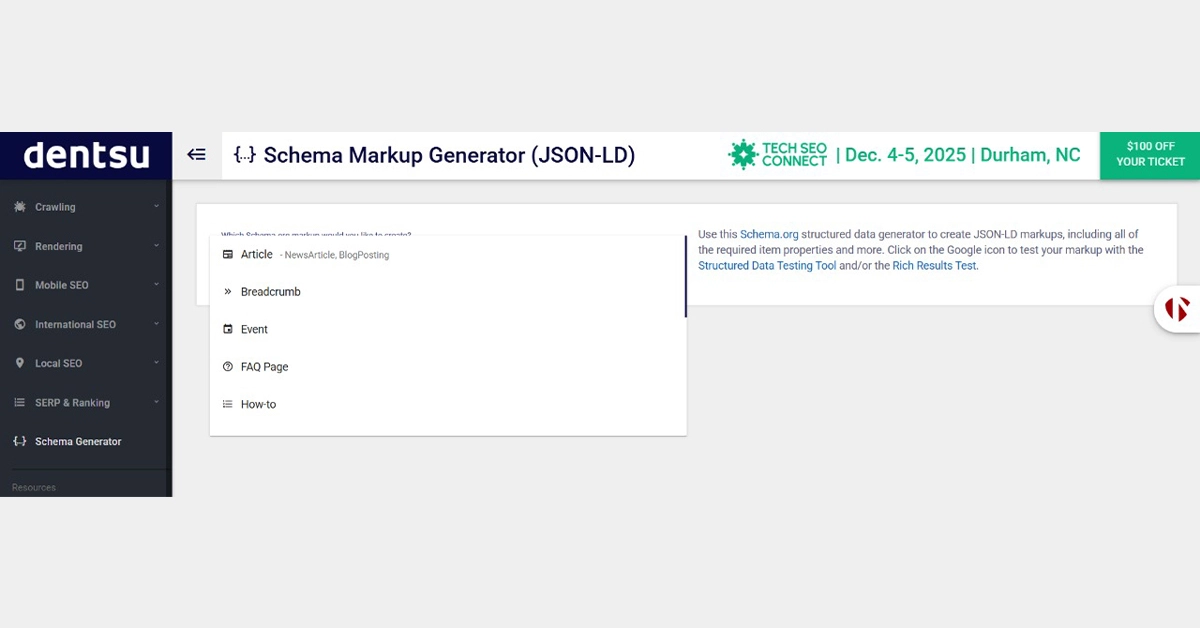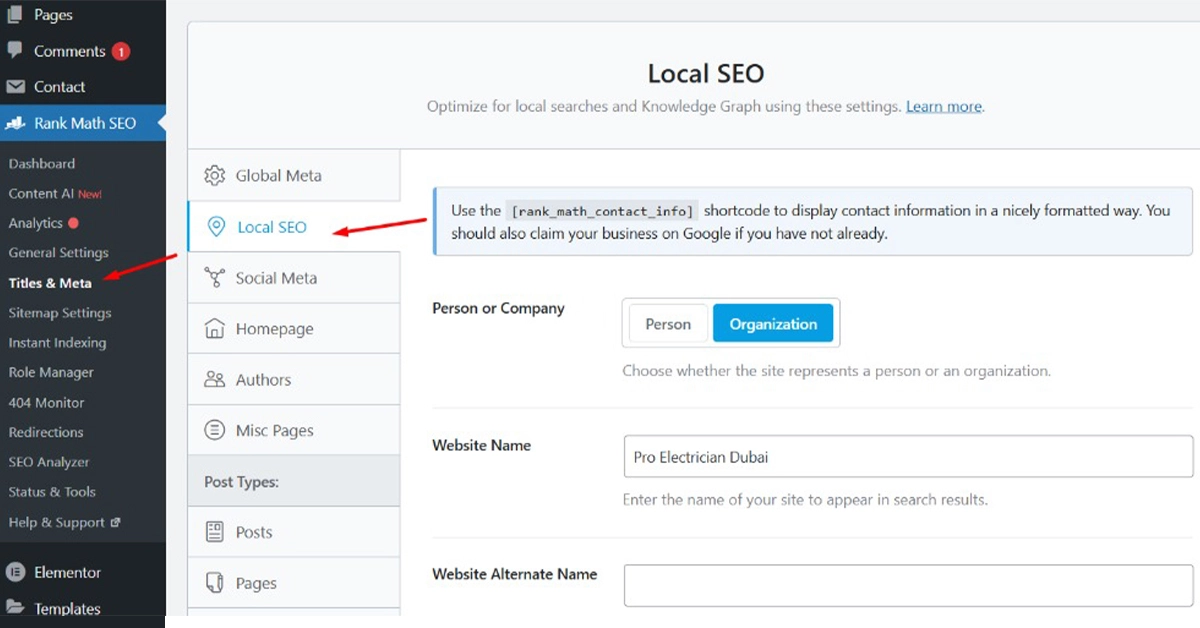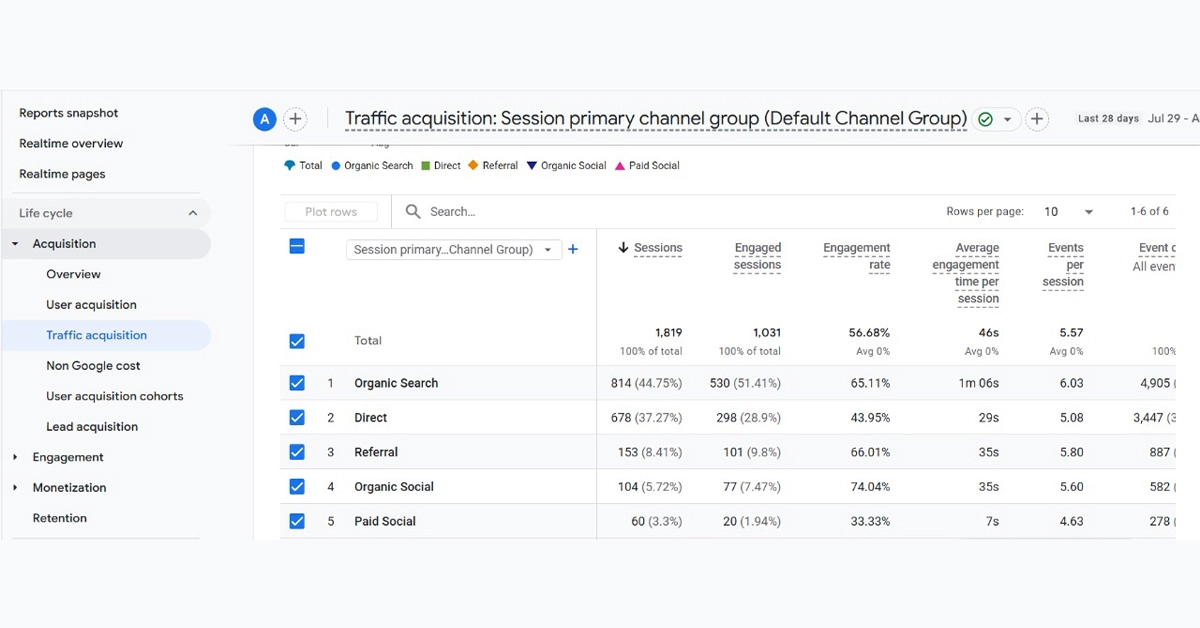As a small business owner, attracting local clients is essential to increasing sales. Additionally, it is crucial to use a planned approach to attract local customers who are conducting internet searches.
Understanding local SEO is essential whether you run a bakery, a barber shop, or any other type of business that depends on local clients.
This is when local SEO (search engine optimization) comes into play. Increasing the visibility of your company in local search results is the goal of local SEO.
You may outrank competitors and increase foot traffic by having your business show up prominently in search or AI chatbot results when local potential clients look for the goods or services you provide.
Learn the craft from our in-depth local SEO guide, which is intended to assist companies in improving their online visibility for local searches, drawing in new clients, and outperforming regional rivals. This local SEO guide will teach you the fundamentals of local SEO, including why it’s important, what you need to do to rank highly in local searches, and a local SEO guide checklist.
What Is Local SEO?
Making your website more search engine friendly for local queries is known as local SEO. People looking for a local business make these searches. You may increase the number of times your company appears in these searches by optimizing its presence using local SEO. The following subjects are among the many facets of local SEO that we will continue to examine in this local SEO guide:
Definition of Local SEO
Local SEO enhances a company’s online visibility for relevant local searches. Being well-known in your community allows you to interact with more local clients. To do your part and draw in more local clients, you should optimize your website for local search terms. Creating listings on relevant directories, linking to local websites, researching and targeting popular local search keywords, monitoring online reviews, and optimizing your Google Business Profile with correct company information, excellent photos, and captivating content are all examples of local SEO strategies. Businesses frequently use local SEO solutions to accelerate these initiatives.
Local intent is thought to be present in about 46% of all Google searches, which demonstrates why companies should give local SEO strategies top priority.
- According to Google, 92% of consumers select companies on the first page of local search results. If your local SEO isn’t yielding results, it may be time to reassess your online presence.
- Discovering a comprehensive GBP on Google Maps and Search increases a company’s credibility by 2.7 times. This implies that to attract this traffic, you need to keep your Google Business Profile (GBP) optimized.
Local SEO vs. Traditional SEO
The primary distinction between local SEO and standard SEO is the target audience. Traditional SEO will focus on larger, location-neutral (think national or international) audiences, such as those that e-commerce firms aim to reach. In their marketing mix, brands competing for the top spot in search terms like “best social media marketing tools,” “top computer science program,” or “grey cookware set” will place a special emphasis on organic SEO. On the other hand, local SEO concentrates on targeting hyper-local, location-based audiences within a specific city or even a single block. These companies want to rise in the map pack and typically target geographically focused inquiries like “24-hour electricians near me” or “Plumber Service in Los Angeles.”
Examine the above attached image of sample differences and how they vary according to local or general search intent.
What Are Local Search Results? (Map Pack vs Organic)
The terms “lawyer” and “dentist” are examples of implicit local searches that relate to goods or services that are often used locally. A ‘local 3-pack,’ or a collection of three local results, usually precedes the organic results from local Google Search queries.
What is the Map Pack?
A key component of Google’s search engine, the Map Pack, also known as the “Local Pack” or “3-Pack,” displays the top three nearby companies associated with a user’s query. These results, which typically include a map, show up just above the organic listings on the search results page (SERP). Users searching for local services can instantly see businesses thanks to this prominent location.
Google chooses the companies that appear in the Map Pack based on criteria like prominence, relevancy, and proximity. Google uses these standards to ensure users see the most relevant and trustworthy local results. Appearing in the Map Pack greatly increases a business’s visibility and chances of drawing in new clients. Given the ongoing increase in local search traffic, this process is particularly crucial.
Businesses can enhance their chances of appearing in the Map Pack by optimizing their Google Business Profile (GMB) entry. Crucial 3-Pack ranking tactics include making sure that company information is correct, obtaining favorable reviews, and keeping up with local citations. Given the growing significance of local SEO, companies that prioritize these elements stand a better chance of gaining a place in the Map Pack and enhancing their local online visibility.
Key Elements of the Map Pack
- The map makes it easy for users to locate nearby locations by displaying business locations. Both locals and tourists will find this visual guide convenient since it helps customers locate establishments fast.
- The name, address, phone number, hours, ratings, and a direct link to the company’s Google Business Profile (GBP) are all important facts that are included in every business listing. Providing customers with easy access to essential information expedites their decision-making process.
- Businesses that prioritize proximity and relevance have the potential to enhance their visibility in local searches. Having a prominent location on the map increases the likelihood of attracting local clients, boosting traffic, and improving rankings.
What Are The Organic Search Results?
The natural listings that appear in search engine results pages (SERPs) beneath sponsored advertisements and the Map Pack are known as organic results. The organic performance of a website determines these rankings, independent of paid promotions. Organic results are essential for companies to achieve long-term, sustainable search engine visibility without continuously spending money on advertisements.
Search engine algorithms rank organic results based on factors like backlinks, keyword optimization, and content relevancy. These algorithms prioritize high-quality, beneficial, and authoritative content, focusing on how well a webpage aligns with a user’s search intent. Websites that satisfy user demands and offer value have a better chance of appearing higher in organic search results.
Organic results offer consistent visibility over time, in contrast to paid advertisements. Continuous SEO efforts, such as increasing site performance, mobile optimization, and content refinement, are necessary to achieve a high organic ranking. Without depending on continuous advertising expenses, this tactic improves user engagement and boosts conversion rates by establishing reputation and trust.
Key Elements of the Organic Search Results
- The content is primarily text-based, occasionally featuring rich snippets or results enhanced by schema, such as product evaluations or frequently asked questions. Schema markup-powered rich snippets improve user experience and click-through rates by displaying comprehensive content, such as reviews or frequently asked questions, in search results.
- Emphasizes on-page SEO, backlinks, content quality, and website authority. High-quality backlinks, site performance, and trustworthiness all contribute to a website’s authority. Optimized on-page SEO (meta tags, headers) and high-quality, user-intent-driven content increase visibility and search engine ranks.
- Focuses on a wider audience rather than just one region. Broader SEO tactics assist firms in reaching a wider audience across various industries and geographical areas by capturing a huge number of search queries. To draw a diverse range of visitors, these tactics frequently focus on competitive keywords.
Why Is Local SEO Important in 2025?
Even though AI Overviews and conversational search are changing how local search results are displayed and viewed, local SEO strategies help your company show up prominently in relevant local search results, such as the Google Map Pack, Apple Maps, organic results, and review sites, making you easily discoverable by nearby potential shoppers.
It’s critical to comprehend the special strategies associated with local SEO if you work with local clientele or interact with them face-to-face. With the correct local SEO strategies, you may increase your company’s online presence in a particular area, connecting you with local clients who will increase foot traffic, lead generation, and income.
Increased Visibility for Local Queries
Local SEO ensures your law firm appears at the top when someone searches “family lawyer near me” or “divorce attorney in the USA.” Just like a local barber shop benefits from showing up for “haircut near me,” your firm gains visibility when it matters most right at the decision-making stage.
High-Intent, Ready-to-Buy Customers
Over 76% of people who search locally on their phones visit a business within 24 hours. For example, someone searching “real estate lawyer near me” isn’t browsing; they’re ready to hire. Local SEO puts your services in front of these ready-to-act clients before they choose your competitor.
Trust Signals From Google Reviews
Positive Google reviews act like word-of-mouth in the digital age. Just like a floral shop with 200+ 5-star ratings gets more orders than one with 5 reviews, a law firm with strong ratings attracts more inquiries, builds credibility, and encourages faster hiring decisions.
Localized User Experience
Local SEO tailors your website and listings to the user’s location, making content and contact details highly relevant. For instance, a salon promoting “Keratin treatment in Midtown” connects instantly with nearby clients. Similarly, a law firm offering “immigration services in Downtown” speaks directly to the target audience.
Mobile and Voice Search Growth
With the rise of Siri, Alexa, and Google Assistant, searches like “best divorce lawyer near me” are booming. A mobile-optimized, voice-friendly SEO strategy helps you capture these clients, just like a pizza shop benefits when someone says, “Find pizza delivery open now.”
How Does Local SEO Work?
When it comes to local SEO, Google is the most popular online platform. The public regularly uses its successfully created local business index to learn about the goods and services offered by actual communities. Because it helps Google comprehend your firm’s location and offers, local SEO can help you rank higher when people search for relevant terms. It can also help Google see your business as trustworthy and well-known.
Google takes into account the following factors when ranking companies in the local pack and on Google Maps:
- Relevance: How well a company fits the user’s search criteria
- Distance: The estimated distance between the user and the company
- Prominence: The company’s level of recognition and favorable reviews
Google takes into account the following factors when ranking webpages in conventional search results:
- Relevance: The degree to which your website corresponds with the user’s search
- Quality: How beneficial and reliable your material is
- Usability: The performance of your webpage (depending on elements like mobile friendliness and speed)
Google’s Local Ranking Factors (Proximity, Relevance, Prominence)
Proximity
Proximity is how close your credit union is to potential customers. This relies entirely on the searcher’s latitude and longitude and their distance from your address. Google will not provide Milwaukee credit union results for “best auto loan rates” in Chicago unless the searcher specifies that location. Greater proximity to the searcher usually means higher rankings in search results.
When walking, Google shows businesses within walking distance rather than those you would regularly commute to, making it even more complex. Because you can’t alter your Google business address to rank elsewhere, proximity is one of the most powerful local seo pillars to manipulate. Instead, enhance your Google Business profile and employ localized keyword phrases on your website to broaden the search query radius.
Relevance
When users search, Google strives to offer the most relevant results. Thus, search results will prioritize the service, material, or information that best matches the intent. Your website and Google Business profile will therefore rank higher in search results if they contain pertinent keywords and services. Do ensure your content is straightforward and easily understood by Google. Complete your Google Business profile and frequently publish posts about relevant services in specific areas, ensuring that you include keywords in each post on either your Google Business profile or your website.
Prominence
Prominence in local SEO means how “popular” your business is online. If your firm is successful in the real world, it will show online without much effort, but you can raise it if needed. To gain prominence, focus on these essential local SEO ranking factors:
- Backlinks
- Social media
- Positive Reviews
Role of Google Business Profile
A Google Business Profile is like a digital store window poster! It can boost online and local visibility for businesses of all sizes. This free web listing was originally Google Places and Google My Business; now it’s Google Business Profile. Google Business Profiles let firms reach more customers than before.
These profiles appear in Google search results and Maps, making them easier to find for customers. Business owners can also upload photographs of their products and services, respond to customer feedback, and update their profile to enlighten customers. A Google Business Profile can help local businesses stand out, gain a reputation, and attract more customers.
Structured Data & Location Schema
Local search marketers sometimes use “schema,” “schema markup,” and “structured data” interchangeably, although there are differences.
Structured Data
Structured data organizes and describes webpage content. Structured data markup adds information that helps search engines understand and display relevant snippets in SERPs.
Schema Markup
A schema is an open-source vocabulary for marking up structured data. A 2011 collaboration by Google, Bing, Yahoo, and Yandex, Schema.org is the search industry’s vocabulary. Website owners can tag business names, addresses, phone numbers, customer reviews, and services using this terminology. Rich results for schema-structured data pages can boost your business’s search rankings.
Local Backlinks & Citations
On other websites, certain links are inserted within material. These backlinks are a component of the SEO tactic known as guest posting, which you can learn more about in-depth on our site! Backlinks are not usually included in citations, but they are frequently, particularly in larger directories. The main distinction between backlinking and citation building is that the former involves concentrating on directories rather than websites that publish content.
Geo-targeted On-page Optimization
Geo-targeting, a local SEO tactic, entails determining each customer’s geographic location and developing unique content based on that information. This allows for the display of pertinent content to customers in a given area through geo-specific location pages.
Step-by-Step: How to Do Local SEO
Local SEO skills will help your firm rank higher in local searches. Following these local SEO principles can boost your local visibility and put you ahead of competitors. Local SEO is essential for growing your business and succeeding in your community. These techniques will help you reach more local customers, increase foot traffic, and grow your business. Knowing local SEO helps boost your local marketing.
1. Set Up and Optimize Your Google Business Profile
Google is the world’s largest and most important search engine—and it’s not close. Google controls 92.41% of search engines. Thus, we advise employing all available strategies to ensure your organization shows in Google search results. Google Business Profile is a free tool that lets local companies appear on Google Maps, display images of their storefronts and products, and connect with a wide spectrum of local buyers. Simple instructions for setting up a Google Business Profile can get you far. But also remember these tips:
- Ensure your name, address, and phone number (NAP) are accurate and consistent across all web postings.
- Choose three to five categories that emphasize your services rather than your clients’ results.
- Keep your description between 100 and 200 words to provide crucial corporate information while accommodating short attention spans.
Select a business category.
- Choose the most precise primary category (e.g., Divorce Lawyer vs. Lawyer; Plumber vs. Home Services).
- Provide 2–4 supplementary categories that reflect your services.
Set service areas.
- Set cities/ZIPs you cover while visiting customers (avoid vast radiuses).
- Please refrain from adding a service area if you serve at your location, and ensure you maintain a clear, permanent address.
Enable FAQs
- Encourage customer inquiries (“Do you offer weekend appointments?”). Are emergency leaks handled?
- When answering from the owner account, be brief, use keywords naturally, and watch for new queries.
2. Perform Local Keyword Research
Next, identify and employ strategic keywords. Search engines obtain keywords from internet users. Someone might Google “top ice cream shop in my city” to find Boise, ID, ice cream shops. Local business owners and managers must find and optimize for their clients’ keywords. Many methods exist for finding keywords. Brainstorm all the terms and phrases clients could use to describe your firm.
“Dog food,” “pet store,” and “Desert Iguana” may apply to pet supply stores.
After a massive keyword brain dump, use keyword software. Free Google Keyword Planner gets you started. Use SEMrush for greater power. These solutions identify hidden keywords and provide volume and competition data for your list of terms. This stage concludes with keyword selection. Select keywords with 70+ monthly searches that aren’t so competitive that ranking for them will take a miracle.
- Tools: Semrush, Google Keyword Planner, People Also Ask, Google Trends
- Local Keyword Intent: Navigational, Transactional, and informational.
Local Modifier Keywords
Local modifier keywords include “Los Angeles,” “USA,” and “near me.” They’re essential for local SEO and client targeting. For example, you can search for “Best lawyer in LA,” “Dentist near me,” and “Plumbing ServiceCalifornia.”
Semantic Keyword Clustering
Semantic keyword clustering groups keywords by meaning and search purpose, not just surface similarity. This technique acknowledges that consumers may search for the same thing with different words. As an example:
Clusters may contain “buy shoes online,” “sneakers for sale,” and “discounted athletic footwear,” even though they don’t share terms.
Optimize Your Website for Local SEO
On-page SEO (title, H1, schema, internal linking)
Page Title:
SEO relies on page titles, or title tags, to define page content topics in search results and browser tabs.
Why Does Page Title Matter?
Page titles inform users and search engines. Optimizing your page title is a must to help users and search engine crawlers understand its purpose.
Page Title Optimization?
To write SEO-friendly page names, consider your users’ search intent and how your content can solve their problems. Present this information in a compact, informative title using your target term. Remember that each headline should target one niche keyword. Filling multiple pages with the same title tags leads to duplicate content and poor search performance. Agencies often make this error when optimizing at scale: assign each page a separate target keyword and title. Try to keep SEO titles within 65 characters. You can confuse prospects by not showing them fully in SERPs. Consider the following Google search results:
What Are Page Headings?
Next, verify page headings, or header tags, from H1 to H6 with your preferred on-page SEO checker. These special tags arrange and structure site material to improve readability and perception.
The importance of Page Headings
Page header SEO reporting greatly impacts user experience. They also help search engines understand site content organization. Well-structured headings help humans and search engine crawlers read your content.
Optimization of Page Headings?
Correct heading hierarchy is essential. Always use your main term in the H1 heading. This header helps visitors and search engines understand page content. Consider other headings from H2 to H6, usually H4, and rank them by importance. A government manual from Australia lists header style dos and don’ts:
What is Internal Linking?
Internal links are website links. This allows you to link pages to create a content website and provide prospects with more useful information.
Why Does Internal Linking Matter?
Users and search engines benefit from internal linkage. Internal links improve navigation, contextual connection, and page value. Internal linking can help agencies showcase your most significant pages to both Google and users. Search engines prioritize web pages that contain the highest number of internal links.
How to Improve Internal Links?
Smart internal linking includes menu or breadcrumb chain links, recent or relevant entries, and beneficial content-rich pages.
What is Schema Markup?
The best way to end this on-page SEO checklist is with schema markup. Schema markup is structured data that search engine bots use to arrange website content.
Why Does Schema Matter?
Proper schema markup is your best option for rich results or snippets that pull more info from your pages, making your website more engaging and trustworthy in search results. Microdata, JSON-LD, and RDFa are common schema languages. Schema markup helps search engines interpret and present your material in visually appealing forms like FAQ accordions, recipe cards, and review star ratings. This boosts search result click-through rates significantly.
Schema Implementation?
You can use 30 structured data markups to assist Google in comprehending your sites. Schemas can help Googlebot understand any material, including articles, breadcrumbs, and job postings. Use Google Structured Data Markup Helper or Schema.org’s extensive schemas to add appropriate schema markup to your pages.
Location-Based Landing Pages
A location landing page is a single page on your website with material customized to one of your locations. A retail giant with 2,000 locations would have 2,000 location landing pages, one for each store. Location landing pages maximize local search. SEO for local business targets local markets. Local targeting reduces keyword competition, makes popular keywords and phrases simpler to rank for, and makes content more relevant to users.
- Local landing pages let you publish unique web pages.
- Location landing pages boost search engine visibility.
- Google likes local landing pages.
- Location pages bypass competitive generic search phrases.
Service Area Pages (Multi-Location SEO)
The invisible radius around each multi-location business branch is its geographic market. Searchers will see the business within this border on Google. Remember, Google heavily personalizes local and organic results when they think a searcher is looking locally. Each branch’s market will have a varied radius and competitors. Benefits of multi-location SEO include:
- Making each location more visible in local searches
- Creating a unified brand across all markets
- Boosting foot traffic and local involvement
Mobile-First and Speed Optimization
- Google ranks websites based on their mobile versions in mobile-first indexing. Google ranks websites higher based on their mobile versions due to the rise in smartphone and tablet searches. Google recommends three mobile-friendly website development methods.
- Different URLs for mobile and desktop users allow you to redirect them to the most optimized page for their device. This style requires minimal HTTP response header knowledge from developers.
Configuring HTTP headers for dynamic serving is similar to using distinct URLs. All users use the same URL, and the server determines the best site version for their device. - While all three approaches can improve your ranking, Google prefers responsive design whenever possible. Multiple devices reach the same URL and server. The site then adjusts to screen size and orientation to provide visitors an experience customized for their device.
4. Build Consistent NAP Citations
Local business citations (sometimes called “directory citations”) are essential for strong local search rankings. That’s true whether you sell football memorabilia in Philadelphia or manage San Diego Zoo digital marketing.
NAP (Name, Address, Phone) Format Best Practices
NAP means Name, Address, and Phone. Any website with your business’s name, address, and phone number is a NAP citation. Your NAP must be listed on third-party sites as well as your company’s website. Every listing is a citation. Google considers NAP citations for displaying geo-targeted results. One of the biggest SEO elements for local search is your business’s NAP citations. Citations influence local search rankings 13.31%:
Top Citation Directories
Citations might not increase your score, but if Google recognizes that you are associated with a reliable website, your chances increase. Citations help Google’s algorithm trust your business. It’s crucial to verify your business information, such as NAP, across the internet. Google may not display your business otherwise. If your website has spammy or low-quality citations, Google may not feature it because it may not be legitimate.
Tools: BrightLocal, Whitespark
BrightLocal provides tools to streamline local SEO for agencies and organizations with many locations:
- White-label Reporting: Agency-branded dashboards and reports for smooth client presentations. The Local Search Grid provides a clearer understanding of a business’s visibility in different regions of a city or neighborhood.
- Local Rank Tracker: Tracks local keyword search ranks with detailed location targeting to identify traffic growth prospects.
- Citation Tracker: Finds business listings, discrepancies, and fresh citation chances.
- The Google Business Profile Audit compares your profile to competitors to uncover missed chances to boost Local Pack rankings.
- Local Search Audit: Assesses performance against key local ranking parameters to identify areas for improvement.
- Reputation Manager: Improves client feedback management with review monitoring, gathering, and display tools.
- Citation Builder: Pay-as-you-go business listing submission without a monthly subscription.
Whitespark provides tools and services to improve local search visibility and reputation management:
- Local platform: Bulk edit locations, restrict modifications, and manage Google Business Profiles.
- Local rank tracker: Accurately track local ranks and find traffic growth prospects.
- Local Citation Finder: Find and track citations to boost internet presence.
- Reputation Builder: Automate customer review collection and management to boost online reputation.
- Google Business Profile Audit: Gain competitive insights to boost Local Pack ranks. Local Search Audit: Evaluate SEO performance against ranking variables to identify opportunities for enhancement. Monitor reviews across platforms to stay informed and reply quickly. Use Citation Builder, a pay-as-you-go service, to create business listings without a monthly membership.
5. Get Online Reviews & Manage Reputation
Research indicates that 46% of shoppers read one to six reviews before making a purchase, and 88% of online shoppers trust reviews as much as personal recommendations. Furthermore, 85% of individuals actively seek out adverse evaluations to identify any problems, underscoring the need to handle feedback well. It continues.
Reviews are vital to local organic traffic. Almost 30% of shoppers will leave a site without customer evaluations, and a one-star rise on Google Maps can raise local businesses’ sales by 5–9%. Even if unlinked, search engines favor reliable websites with positive mentions. Brand perception and local search results on Google Maps will increase with audience engagement and reputation management.
Strategies to Get Reviews
Local SEO and reputation management help you connect with your community and develop trust. With the right procedures, internet presence can lead to foot traffic and consumer loyalty. Some helpful strategies are listed below:
1. Track customer feedback
Find out where customers talk about your business. Explore review sites, social media, local forums, and community boards. Center AI can aggregate comments from Google Maps, Apple Maps, Bing, and Facebook into one dashboard for simpler tracking and analysis.
The Center AI dashboard is helpful for managing SEO reputation.
Look for patterns—do customers have common complaints?
Your checkout process or discount codes may be broken. Client complaints often reveal these difficulties. You may also respond rapidly to reputation problems by monitoring brand mentions. Start with these to demonstrate listening and activity. Regularly verify and respond to reviews. Listening to customers improves their experience and loyalty.
2. Promote Positive Reviews
High Google Search ranks with favorable reviews might affect how potential customers view your brand. Favorable reviews also help reduce negative search engine results. Promote client reviews to keep your material fresh and relevant. Ask delighted consumers for Google reviews shortly after their purchase or visit, while the experience is fresh in their memories. Increase your review count by using:
Review email requests.
Checkout QR codes,
Friendly popup,
Review Booster by Center AI.
All of these capabilities are integrated into Review Booster to automate the review process. After collecting reviews, notice them. Display positive reviews on your website and social media. These stories establish trust and encourage clients to choose your business.
Platforms: Google, Yelp, Facebook
Social media is an easy way to build trust and engage with your audience. Start by posting favorable reviews and honest consumer feedback.
Instagram, Facebook, Yelp, and X (previously Twitter) are ideal for promoting future events. Active presence also lowers negative search results.
Track brand mentions to learn how customers view your business. Respond swiftly, giving praise and managing criticism thoughtfully. Being responsive shows clients you value their feedback and fosters brand community. A dynamic and engaging social media presence helps you develop lasting audience relationships.
Responding to Reviews (Trust Signals)
Fast response shows customers you value their feedback. Online reputation management begins with data. Set up review alerts to never miss a comment. Acknowledge the customer’s experience—good or bad. Do not provide impersonal answers. Thank customers and offer specific feedback for positive reviews. Empathize and offer solutions to unfavorable comments. Another smart option for negative feedback is Review Booster, which lets customers privately voice complaints before they go public. This realistic approach protects your brand’s reputation while identifying areas for improvement.
6. Earn Local Backlinks
Backlinks from local websites are crucial to local SEO. Backlinks from local news sites, community blogs, and other local companies show search engines like Google that your business is reputable and important. Quality local backlinks boost your website’s local search ranking and customer visibility.
Local Partnerships
One effective strategy for obtaining backlinks is to establish connections with nearby companies. Collaborating with businesses that complement each other enables you to share links, highlight each other on your websites, or establish a resource page that showcases reliable local suppliers.
Chambers of Commerce, Local News, Sponsorships
Building local links is a crucial tactic for raising online authority, brand recognition, and search exposure. Gaining backlinks from businesses, chambers of commerce, and local news websites will help your website become more credible and rank higher in Google’s Local Pack.
Embed Maps and Event Participation
Interactive maps and clear directions on landing pages are essential for local SEO. They let customers easily identify a company’s physical location by connecting its online and offline presences. Embedded maps improve a site’s user experience for mobile users that need navigation on the go. This update shows search engines a business’s real-world applicability, enhancing local search exposure and consumer engagement and conversion.
7. Add Local Business Schema Markup
The search engine uses a specialized language to understand schema markup data, which is coded. Structured data (schema markups) can boost a digital marketing approach. You can designate each department with an OpeningHourSpecification item if your business has different opening hours each day. Customers utilize search engines to identify businesses near them, in their timezones, and available. Provide search engines with as much relevant information about your local business as possible to boost your ranking.
Address, Opening Hours, Service Area Schema
Google keeps it shockingly straightforward by focusing on only two crucial components:
Name: The official name of your company, as it appears on all domains and in your Google Business Profile. The advanced local SEO secret is consistency!
Business Type: Indicates the kind of services you offer.
Address: The actual place where you live.
Business Hours: Clearly state to clients your hours of operation, including any particular holiday hours.
That concludes the list of essential criteria! You’re right, though, if you’re thinking, “That can’t possibly be enough.” You should also offer recommended properties if you want to stand out in local search results.
Tools: Merkle Schema Generator, RankMath
Merkle’s Schema Markup Generator simplifies schema markup creation and is user-friendly. It outperforms Schema.org and Google’s Structured Data Markup Helper in various ways. Merkle’s tool’s user-friendly interface makes it accessible to both novice and professional users. Navigation is simple, making content customization and code generation easy. Merkle’s Schema Markup Generator offers schema types for many content categories. This flexibility lets users apply structured data to articles, events, and items, covering a wide range of online information. Additionally, Merkle’s tool streamlines schema markup generation. It streamlines structured data implementation on websites, saving time and effort.
Rank Math’s Schema Generator, incorporated inside its SEO plugin for WordPress, makes schema markup easy to add without coding. This WordPress-specific tool simplifies the procedure and offers various benefits. First, Rank Math’s Schema Generator is designed for WordPress users. Its simple interface lets users add schema markup to their material without manual coding. The plugin supports article, event, and product schema types. This adaptability lets WordPress users add structured data to a variety of content, improving search engine rankings. Rank Math’s Schema Generator’s customisation is a plus. Users can customize schema markup for their material. This adjustment guarantees that structured data matches webpage content.
8. Use Local SEO Tools & Analytics
You may gain awareness on Google, YouTube, AI results, and other platforms if you have the appropriate tools. Not by looking for shortcuts, but by working more quickly, making better choices, and concentrating on what actually produces results. The top SEO tools enable you to accomplish just that:
- Find the appropriate opportunities.
- Examine the factors influencing visibility (and the areas where it is declining).
- Perform better than your rivals.
- Create content that converts, ranks, and is found.
Google Search Console
Google Search Console is a famous SEO analytics tool and free. Webmasters may assess crawling, indexing, search rankings, schema markup, page experience, backlinks, and more with Google Search Console. Google Search Console benefits SEO in several ways:
- Data accuracy: Ask Google if it found and indexed a URL.
- Access fresh data (usually from the past few hours) for speedier analysis.
- Data versatility: Use data for keyword research and backlink analysis.
Google Business Profile Insights
Your Google Business Profile appears in Search and Maps. When someone searches your business name, SERPs may show your profile. Potential clients may click on your business name in a local pack to see your profile. Maps displays Google Business Profiles. Insights and Performance are the only way to know how many people see your GBP, where, and what they do.
UTM + GA4 Tracking
Without this information, a campaign may miss key insights needed to adjust its strategy. In Google Analytics 4, how do you discover gaps? GA4 places Universal Analytics insights across various dashboards and adds filtering and local data access. Local data collecting requires additional settings and configurations. Local SEOs should frequently examine organic user locations, behaviors, and search result landing sites. GA4’s core reports allow us to examine organic data on local behaviors:
Demographics
Acquisition of traffic and users
Custom report library landing page
Explore
Nothing is ideal about these reports. Every report has problems that confuse our data. I’ll give troubleshooting suggestions and context for each report to make data analysis useful.
Semrush/Ahrefs Position Tracking
Ahrefs
A well-known and potent SEO toolkit, Ahrefs also provides useful features for local SEO. Although Ahrefs is most renowned for its keyword research and backlink analysis features, it also offers several other tools that can help you improve your local search visibility and draw in more local clients.
Semrush
The feature-rich SEO suite SEMrush provides you with a range of tools and services to help you raise your online profile. Although SEMrush is most known for its site audit, backlink analysis, and keyword research capabilities, it also provides helpful tools for local SEO. Making use of these features could help you attract more local customers and improve your local search visibility.
Local SEO for Multi-Location Businesses
Many multi-location firms struggle to rank each branch in local search. Online, one branch may thrive while another barely exists. Especially when your service is excellent, it’s aggravating. Your question may be:
- “How can I rank multiple locations cheaply?”
- Is local SEO only for one-location businesses?
- What if I don’t have time or resources to manage SEO for all my branches?
Best Practices for Franchises and SABs
Local SEO may be a new concept for small, mobile businesses that do not have a physical storefront. SABs like plumbers, electricians, mobile pet groomers, and others face specific hurdles in building an online presence. Understanding local SEO for service area businesses and using the proper methods will help you target your service areas and reach more clients than ever. SABs require excellent local SEO tactics to overcome difficulties and seize opportunities. They must include and optimize information in customer-searched regions. A 2023 BrightLocal survey found that people trust Google (66%), Google Maps (45%), business websites (36%), Facebook (32%), and Yelp (32%). Here are some key strategies to consider:
- You must optimize your Google Business profile.
- Build a Mobile-Friendly, Strong Web Presence for Local SEO
- Building Local Links
- Use Social Media and Service-Area Content Marketing
- Track Local SEO Performance
Local Landing Pages vs. Directories
A single “Locations” page with a list of branches in bullet points is no longer sufficient. You require location-specific landing pages that are completely optimized for local search. For that branch, consider each page to be a mini-site. Included in it should be:
- Clear NAP data
- Keyword-infused localized service descriptions
- A Google Maps embed
- Customer evaluations unique to that branch
- FAQs or offers tailored to a location
Store locator SEO is important in this situation as well because it makes it simple for customers and search engines to find your locations. In addition to directories, which enhance your overall online presence and visibility in local search results, local landing pages are essential for tailoring your website for certain locales and drawing in local clients.
Preventing Duplicate Content Issues
One of the biggest SEO dangers for multi-location firms is duplicate content. How to avoid it:
- Even if services are the same everywhere, add local flavor to descriptions. Mention local landmarks, events, and customer experiences to personalize each page.
- Copy-pasting or dynamically inserting a city name into a web template can make Google flag it as low-value content.
- Hreflang tags tell Google which page is relevant for each region where a business offers slightly different services.
- Canonical tags tell Google which page to prioritize, minimizing duplicate content penalties.
Avoiding duplicate content lets location pages rank independently without interfering with city-based pages.
AEO & Voice Search in Local SEO
SEO was organized and well-defined. You used to rank if you had well-researched keywords, excellent backlinks, and a long form. The same cannot be said now. AI tools have revolutionized search, but they are still crucial. It values context and intent over robot-like keyword search. Google Lens is used almost 20 billion times every month. Users expect answers from visual and vocal searches. Voice search powers have been greatly improved, so individuals have virtually human-like discussions with the AI daily.
Optimize for “Near Me” Queries
A lot of voice searches are local. To draw in local traffic, make sure your content contains location-based keywords like “near me.” A nearby eatery included location-based keywords and a thorough FAQ section about its food and services to improve its content for voice search. After implementing structured data, the restaurant started to show up in local voice search results, drawing in new clients who were looking for dentist”near me.” This enhanced overall brand engagement in addition to increasing local traffic.
Use of FAQs and Conversational Content
Voice searches are conversational by nature. Instead of typing “divorce lawyer near me,” users are more likely to ask, “Who is the best divorce lawyer near me?” Steps to Take:
- Use question-based phrasing and natural language in your writing.
- To find frequently asked questions about your topic, use resources such as AnswerThePublic.
- Pay attention to long-tail keywords that represent human speech patterns.
ChatGPT, Siri, and Alexa Implications
Voice search is transforming the digital world, affecting SEO. Alexa, Siri, and Google Assistant are becoming part of our daily lives, and their market size is predicted to be $50 billion in 2029. People prefer to speak rather than type their questions. Traditional SEO strategies must be reevaluated due to user behavior changes. Voice searches are lengthier than text searches and sound natural. This affects keyword planning and content optimization, with more focus on NLP, semantic search, and long-tail keywords.
The Voice Search-Featured Snippet Connection
- Voice search and featured snippets correlate well. Alexa, Siri, and Google Assistant use highlighted snippets to swiftly answer voice requests.
- Clear, concise replies are beneficial for voice search. Voice search-optimized websites are more likely to be sourced for highlighted snippets.
This emphasizes the value of simple, consumable website content. This boosts your site’s voice search rankings.
What Is the On-Page Optimization Checklist for Local SEO?
Local Keyword Research
Every page should be structured around a single main keyword. This prevents keyword cannibalization, the practice of your pages competing for the same phrases. Include the main term in the section headers, URL slug, title tag, and meta description.
Local Business Schema Markup
Use schema markup to provide a rich snippet that shows your location, ratings, and other important details in the search engine results pages.
Meta Tags, Headings, Image Alt Text
- Create distinct title tags for every site, but make sure they are written for people as well as search engines.
- Enhance your meta descriptions to increase SERP click-through rates.
- To logically organize your information, use header tags (H1, H2, H3). For example, avoid jumping from an H1 heading directly to an H4 heading or starting with an H3 heading while ignoring the H1 heading.
- Give search engines context by using the image alt text. For user experience, SEO, and accessibility, alt text is essential. By providing descriptions for images, it enables visually challenged people to access content through screen readers.
Internal Linking and GEO Modifiers
To enhance navigation and aid in link authority sharing, provide internal links.
Location-Specific Content
To optimize local SEO on-page, write location-specific content with relevant keywords and facts. Optimize titles, meta descriptions, headers, and URLs with location-based keywords. Make your information well-structured, easy to read, and useful to locals.
Speed + Mobile Optimization
Increase the speed at which your pages load; this is important for user experience and a ranking element.
Google supports mobile-first indexing, so please ensure your material is responsive.
What Is the Off-Page Optimization Checklist for Local SEO?
Like digital endorsements, off-page signals. The more reliable websites mention and connect to your organization, the more search engines trust it. These “votes” assist local companies gain reputation and be found by consumers searching for local products or services. Link building, social media involvement, influencer outreach, reviews, and local are off-page optimization. One strategy that directly increases local search relevancy is local citations. By having regular and credible referrals to your business on well-recognized platforms, search engines can validate its validity and find it.
Optimize your Google Business Profile
Create a Google Business Profile (GBP) to boost your business’s map-based search results. This off-page local SEO checklist assignment is likely the most important one, as many people discover businesses through Google’s local search results. A pizza parlor search would provide these results:
Build Consistent Local Citations
Link building, social media interaction, influencer outreach, reviews, and local search engine optimization are all part of the off-page optimization. Local citations are one of these tactics that directly improve local search relevancy.
- Verifying Business Legitimacy
- Local Search Visibility Improvement
- Helping Map Pack Rankings
- Building Brand Recognition and Trust
Generate Positive Customer Reviews
Take control of your internet reviews to optimize their benefits for your company. Start by adding your company to review sites that are pertinent to it and, if needed, upgrading your current business profiles. This enables you to keep control over your internet presence and increase your visibility. Once you’ve chosen a review site, begin soliciting evaluations from your clients. The type of business you run will determine the best strategy for obtaining reviews on the platform of your choice. To get you motivated, consider these options:
- Include a link to your reviews page in emails you send to consumers asking for reviews.
- To make it simple for visitors to view and submit reviews, include a reviews widget on your website.
- When you speak with customers in person, let them know that you value their reviews.
- Create a scannable QR code from the link to your reviews page to put on business cards, posters, and other printed materials.
React as swiftly as diplomatically as you can to reviews that you get. to demonstrate your concern for client service.
Social Media Citations
Create local citations on relevant, high-quality websites for your business’s name, address, and phone number. This is a crucial local SEO task because it increases customer reach. Citations enhance GBP ranks in Google. Citations can be built in many places:
- Directories of businesses Add your business to Yelp, Bing, and Apple Maps.
- Online social networks: Complete your social media profiles.
- Platform reviews: Add your business to Trustpilot or Tripadvisor.
- Local sites: Ask local bloggers or newspapers to mention your business.
- Industry-specific websites: Mention your firm on industry websites.
Keep your name, address, and phone number consistent across sites. Google can trust your information and link your citations.
Acquire Local Backlinks
Local backlinks are links from local websites. These backlinks can boost your search engine rankings and traffic. Quick tips for building local backlinks:
- Enter community events into local event directories.
- Consider providing testimonials for your local vendors’ websites.
- Invite local bloggers or media to review your business.
- Invite local sports teams, charities, and events to link to your website.
- Compete in local business awards.
- Post jobs on local job boards.
- Write press releases regarding business events like product launches and hiring drives and send them to local media.
- Check for unlinked brand mentions and advise creators to link.
Read Google’s link spam policies before starting. Breaking these rules can result in a Google penalty that lowers your search rankings.
Utilize Digital PR and Influencer Outreach
The term “off-page SEO” describes the tactics and initiatives used by public relations specialists to improve their clients’ or organizations’ exposure and reputation. PR efforts that establish brand authority forge enduring bonds with media organizations, boosting your brand’s legitimacy on various channels. Another key tactic is to pay attention to unrelated brand references as indicators of trust. You may increase search engine exposure and build your domain authority by converting these remarks into backlinks.
Guest Posting Backlinks
Guest posting on high-authority websites increases visibility, reputation, and backlinks, which brings in targeted visitors to your website. Similarly, using content syndication to expand your audience raises organic traffic and brand awareness. Enhancing engagement also requires producing shareable materials like movies, case studies, and infographics. These graphic resources appeal to a variety of consumers and are excellent for social media sharing, reaching a wider audience, and enhancing SEO performance.
How to Measure Local SEO Performance
Monitoring your local SEO efforts is essential to identifying strengths and weaknesses. You can improve your local SEO strategy by tracking your performance over time. Local SEO’s ultimate goal is to increase leads and income, but there are many more indicators to evaluate alternative strategies.
Map Pack Rankings
Ranking in the map pack requires more than just visibility. Capturing customers at the moment they’re considering buying is key. Your client gets a flood of local, purchase-intent leads with premium map pack real estate. No other digital marketing medium offers such localized visibility.
GA4 + GSC Reports
Track organic traffic, keyword rankings, and user interaction in your local area to analyze Local SEO performance with Google Analytics 4 (GA4) and Google Search Console (GSC). Let’s analyze GA4’s Acquisition data, tweak reports to isolate local organic traffic, and use GSC’s Performance report to evaluate search queries and page performance.
UTM Tracking
Marketing a multi-location local firm exacerbates GBP Insights’ shortcomings. GA4 reports can distinguish between the physical locations of your organization using UTMs because you can specify branches within the code. This lets brand leadership, SEO, and marketing monitor branch-level performance, especially for website aspects like location and service area landing pages. UTMs also let you measure whether improving your branches’ GBPs is increasing user engagement. UTMs let advertisers prove their budgets are working.
GBP Insights
Make use of insights from Google Business Profile to monitor desirable behaviors that prospective clients take, like website clicks, directions queries, and phone calls.
Review Count & Rating Averages
Monitor the ratings and reviews of your company on sites like Facebook, Yelp, and Google. Gaining more reviews or a higher average review score than your rivals will help you surpass them in local rankings, and positive reviews can boost your local SEO efforts. RankX Digital makes it simple to monitor your Google Business Profile and Apple Maps reviews. It also allows you to compare your overall review score and total number of reviews to those of all of your local competitors.
What Are the Most Common Local SEO Mistakes to Avoid?
SEO errors might severely harm your website’s chances of ranking highly in search results. Common mistakes like keyword stuffing and disregarding mobile optimization also confuse search engines.
Inconsistent NAP
Name, Address, and Phone (NAP). It’s company contact info. This information helps search engines validate your business’s credibility and relevancy. Some Considerations:
- Possible Issues: Incorrect NAP information can confuse SEO and customers. Local searches can reduce your business’s efficiency. Customer confusion can impact revenue and trust in your organization.
- Regular updates: Please update any old or outdated information manually to ensure accurate NAP. You can fix issues in Google My Business account management panels. Use Moz Local, BrightLocal, or Whitespark to manage citations. They will find missing citations and standardize business information across directories.
- Standardize Data: Establish a common business name, address, and phone number format and utilize it across all platforms. For instance:
- Address: 123 Main St., Springfield, IL 62701; Phone Number: (555) 123-4567. Name: XYZ Bakery
- Cite building: Missing citations can make your article seem questionable. Plagiarism can damage your reputation and audience trust. Readers must cite the information to verify it or learn more.
Ignoring Reviews
Negative reviews are crucial to local SEO since they affect your company’s online presence and reputation. Local company rankings on Google depend on review quantity and quality. Multiple unfavorable reviews can hurt your search rankings. It could damage your company’s reputation. Poor evaluations may cause buyers to prefer competitors with better ratings. Even in search results, unfavorable reviews reduce clicks on your business listing. This immediately impacts sales and revenue.
Things to consider:
- Provide Excellent Service: To avoid bad reviews, provide high-quality products and excellent service.
- Address unfavorable reviews swiftly and professionally. Show you value consumer input and want to improve.
- Request favorable ratings from delighted customers. This can mitigate negative criticism and boost your rating.
Not Updating GBP
Google My Business (GMB) is a free feature that lets businesses manage their online presence on Google Search and Maps. A GBP integration links your Google Business Profile to other tools and apps. Your profile becomes more functional and visible online. Your company’s Google presence gains authority. These interfaces standardize corporate data across platforms, enhancing visibility, engagement, and customer behavior insights.
Things to consider:
- Find Useful Integrations: Integrate your GBP with CRM solutions like Salesforce or HubSpot to update customer data and improve client relations. You may connect booking systems like Calendly or Square
- Appointments to let clients arrange salon or other business appointments through your GBP.
- Use Management Tools: Use Yext, Moz Local, or BrightLocal to centralize corporate data across platforms. Connect your GBP to Google Analytics and other analytics applications for improved insights.
Wrong Category or Address
Choose the right categories to help search engines understand your business, highlight it in related searches, and enhance visibility. Facilities like wheelchair access and free Wi-Fi attract customers and boost your business listing in local search results. Ignoring category and attribute choices can impact search rankings, click-through rates, and opportunities.
The Solution:
- Find a specific category: Choose your business’s most accurate primary category. Cover extra business factors using secondary categories.
- Add Relevant Attributes: Provide business hours, payment methods, and services. Highlight amenities like handicapped access, free Wi-Fi, and pet allowances.
- Most recent data: Your qualities and categories should be updated regularly to reflect company changes.
Ignoring Schema Markup
Microdata or code you put on your website to help search engines understand its content. It helps to mention your company’s address, contact info, hours, and services. Rich search snippets from schema markup improve your listing’s visibility and clicks. Search engines may not interpret your business information without schema markup, lowering your rankings. This may reduce clicks and visits to your listings and make it harder for customers to find your business in local searches.
Considerations:
- Determine Schema Types: Pick schema types for your business category (LocalBusiness, Restaurant, MedicalBusiness). Choose the properties (name, location, phone number, opening hours) to mark up.
- Create Website Schema Markup: Generate a schema markup code with Google’s Structured Data Markup Helper or other online generators. Manually adding JSON-LD schema markup to HTML improves integration if you can code. Put the code in the HTML of the necessary website pages. If you use WordPress, Yoast SEO or All in One SEO Pack can ease this process.
What are the Ranking Factors of Local SEO?
Local SEO ranking variables primarily determine how your company appears in local search results. You can increase your visibility and draw in more local clients by making the most of these elements.
Google Business Profile (GBP) Optimization
Your GBP is the foundation of local SEO-optimized categories, service areas, photos, and posts directly impacting visibility. For example, a law firm that adds “Family Lawyer” as its primary category will rank higher for divorce-related queries.
NAP Consistency (Name, Address, Phone Number)
Search engines value consistent business details across all platforms. A real estate agency with matching NAP on their website, Google, and Yelp builds trust and ranks better.
Reviews & Ratings
High-quality, recent reviews act as trust signals and influence rankings. A law firm with 200+ 4.9-star reviews will appear more credible than a competitor with only a handful.
Local Citations & Directory Listings
Being listed on reputable directories (Yelp, Avvo, Yellow Pages) reinforces authority. A small business plumber listed on Angi and HomeAdvisor gains a stronger local presence.
On-Page Local SEO Signals
Including city, service keywords, and schema markup helps Google match your site to local intent. For example, a “Chicago Personal Injury Lawyer” page with local testimonials ranks better for Chicago searches.
Proximity
Google prioritizes businesses physically closer to the searcher. A coffee shop two blocks away will outrank one 10 miles away for “coffee near me.”
Backlinks (Local & Relevant)
Quality local backlinks boost authority. Sponsoring a local charity event and appearing on the city’s news site provides a law firm with significant local SEO benefits.
Social Signals
Active social profiles drive engagement and trust. A real estate agency posting market updates on Facebook and LinkedIn shows credibility and supports local ranking indirectly.
Mobile & Technical SEO
Fast, mobile-friendly sites are essential since most local searches happen on smartphones. A restaurant with a one-click “Call Now” button captures more customers than one with a slow, non-responsive site.
Final Thoughts: Start Building Local Visibility
Using local SEO is a crucial tactic to attract local clients to your company. You may increase your local search exposure and optimize for Google’s ranking algorithms by using strategies like local keyword targeting and Google Business Profile optimization.
Of course, it can take a lot of effort to manage a local SEO plan. So, we’ve got you covered if you want the professionals to help you with your plan. See how our RankX Digital team can help you dominate local search results by looking at our local SEO services, and getting a free quote online!
Frequently Asked Questions
What is local SEO, and why is it important for small businesses?
Local SEO helps your business appear in Google Maps and local search results when people nearby are looking for your products or services. For small businesses, this means more calls, more visits, and more customers without competing against nationwide brands.
How do I find the best local keywords to target in my area?
Use Google Autocomplete, People Also Ask, and keyword tools like Semrush or BrightLocal to spot what people in your area are searching. Look for combinations of your service + city name and common “near me” searches.
How can I optimize my Google Business Profile for local SEO?
Fill out every field, pick the right category, add quality photos, write a keyword-friendly description, keep your hours updated, and respond to all reviews. Google rewards complete, active profiles with higher visibility.
What are the essential steps in a local SEO checklist for 2025?
- Claim and optimize your Google Business Profile
- Research local keywords.
- Create service area or location-specific landing pages.
- Keep your NAP (Name, Address, or phone) consistent.
- Build citations and local backlinks.
- Collect and respond to reviews.
- Add local business schema markup.
- Track progress with Google Search Console, GA4, and GBP Insights.
How do I get my business to show up in Google’s local pack (3-pack)?
Google’s local pack favors businesses that are nearby, relevant, and trusted. Optimizing your GBP, targeting local keywords on your site, getting consistent citations, and earning positive reviews will improve your chances.
What role do online reviews play in local SEO, and how can I get more?
Reviews influence both search rankings and customer trust. Ask happy customers to leave feedback, send review links by email or text, and always reply, even to negative reviews.
How can I improve my ranking for “near me” searches?
Use location-based keywords naturally on your site, include your address in schema markup, keep your GBP updated, and encourage reviews that mention your city or neighborhood.
What local SEO mistakes should I avoid in order to improve my visibility?
Don’t let your NAP details differ across sites. Avoid outdated GBP info, wrong categories, ignoring reviews, and skipping structured data. These small errors can hurt rankings.
How does schema markup help with local SEO?
Schema tells Google exactly who you are, where you are, and what you do. Adding local business schemas with your address, phone number, opening hours, and reviews makes it easier for Google to feature your business in rich results.
How do voice searches affect local SEO, and how do you optimize for them?
Voice searches are more conversational. Individuals often pose comprehensive inquiries such as, “What is the premier pizza establishment currently open in my vicinity?” To achieve these results, please include FAQs, use natural language, and ensure your GBP is complete and accurate.
What are the top local SEO ranking factors Google considers?
Proximity to the searcher, relevance of your listing, and prominence (reviews, backlinks, and citations) are key. Mobile-friendliness, site speed, and accurate business details also matter.
What are effective local SEO strategies for multi-location businesses?
Create unique landing pages for each location, build separate citations, and manage reviews individually. Use consistent branding but personalize content for each city or area.
How important is competitor analysis in local SEO?
Critical. Competitor analysis shows you which keywords, backlinks, and citation sources are helping others rank so you can match and improve on their strategies.
How can I use local citations to boost my local search presence?
List your business in trusted directories like Yelp, Bing Places, and local chambers of commerce. Keep your NAP identical across all platforms to strengthen your credibility with Google.
What tools are recommended for local SEO keyword research and tracking?
Google Search Console, Google Business Profile Insights, BrightLocal, Whitespark, Semrush, Ahrefs, and Moz Local are top choices for tracking rankings, finding keywords, and monitoring citations.

